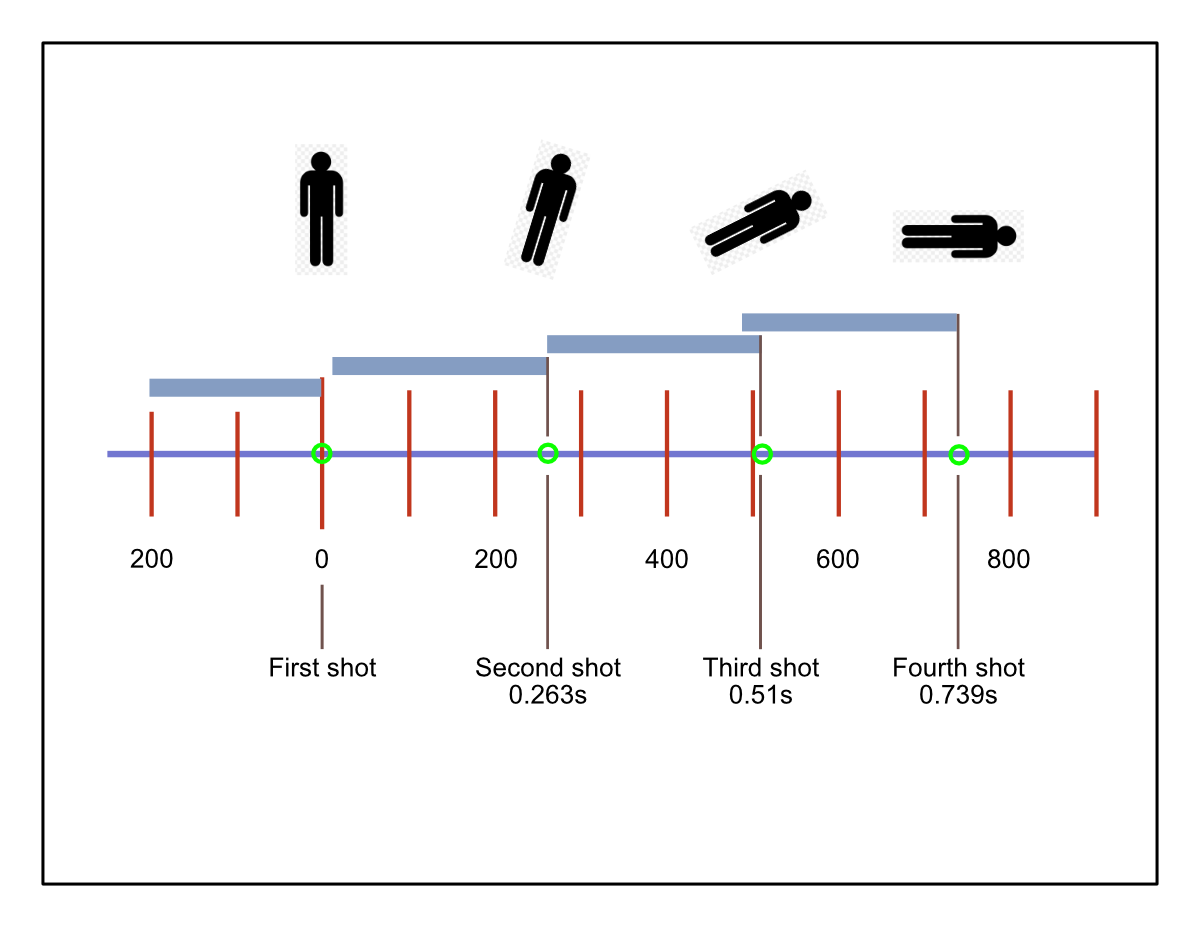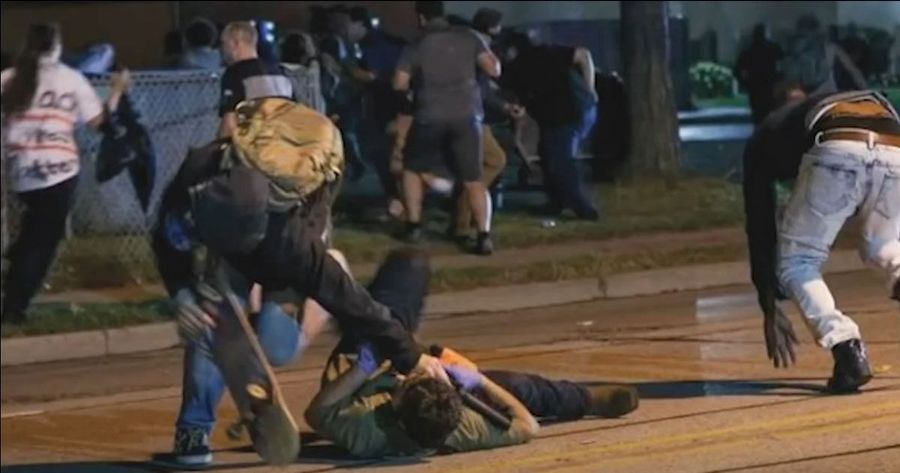It is supposed to be the job of the prosecutor to find the truth - or at least something that is as close to the truth as can be determined. Unfortunately, factor in the fact that most prosecutors won't even try a case they don't think they can win, or should win, and there's a strong incentive to bend the rules a bit to "win" the cases chosen, vice letting the evidence lead where it may, above and beyond professing the state's narrative based on already known facts.
That is as close as I'll ever likely come to excusing the behavior of Binger.
The man has an odious personal philosophy where citizens, not vigilantes, taking the protection of the community into their own hands without hunting people down, are the bad guys for saying "no" to vandals and arsonists. He tried to simultaneously impugn Kyle for not giving interviews before the trial, while using what few media statements and appearances he'd made to try and pierce his fifth amendment rights. His office apparently tried to suborn perjury - or at best - to have a witness statement rewritten and spun to reflect their desires even if not an outright lie. His office handed over a bad evidence file with a different name and a different creation time, while pretending it was somehow the mail system or receiving mail applications fault, despite attachment encoding not working that way.
What I'm getting into here is how he also repeatedly played dishonest rhetorical games with time and what happened, especially centered around Kiddie Diddler and the four shots Kyle took. One of the more egregious rhetorical sleights of hand was repeatedly referring to how the shot that had killed the diddler - that is, nearly instantly killed him - was Kyle's shot to the back, with a lot of implication that it was Kyles final shot. The other wasn't the ludicrous assertion that Rosenbaum was trying to swipe the gun away, but rather how he repeatedly acted like Kyle had all the time in the world to choose and stop. The two combined let him imply that Kyle had knowingly and deliberately shot a helpless man in the back with murderous intent to kill.
What follows is my own far less expert approximation of what I wish we could have had better explained by Dr john Black.
Assumptions:
Average response time is roughly 200 ms for a "go" type event, though some olympic athletes have actually measured response times under 100 ms.
Go/no go response times are slower. After digging around, I'll use 250 ms.
A walk is often paced at 1.4 m/s (nearly 5 feet per second) - I'll use a running speed of 10 feet per second.
People don't fall at a steady rate when they collapse, they accelerate somewhat. That said it doesn't appear to be much different here. The figure represents a rough approximation of time to go prone.
It doesn't really matter what exact order the shots struck in here beyond what the expert could determine, so I'll work with "first shot to the pelvis" as it directly addresses the prosecution's attempt to misrepresent Kyle's situation. The prosecution forensic expert couldn't give an exact order to the shots, he grouped the hand and pelvic shots as the first two, and the "back" and head shots as the last two. While I think the hand was shot first - most running speeds give time for the pelvic shot to be beyond 4 inches for soot deposits if the hand was first, and even with momentum, time for him to collapse forward and still take the "bullet to the back" and head in front of Kyle, the angles on the video make it unclear, depending on how agressively kiddie diddler was leaning in, which one was first. Also, I'm fairly certain the scalp wound was the last shot, as it is the only one that apparently was inflicted "back to front" - most likely when Rosenbaum was nearly face down/horizontal.
I'll assume the bullets were effectively instantaneous.
The times in the chart are directly from Dr Black's testimony.

Timing
Remember - this all happened in roughly the time one can say "one thousand" if you were counting off seconds as "one thousand one, one thousand two," and so on. Also, the initial "go" decision to take the first shot had to have happened before the first shot - represented by the first blue bar. In that time, KD would have easily approached 2-3 feet, but it would have also been obvious there was no way to avoid contact.
Kyle pulls the trigger for shot one. It travels less than four feet and strikes KD in the pelvis and shatters it. His legs start to give out. His body begins to fall forward.
This of course takes time.
This is also where Binger dishonestly told the jury that Kyle had the opportunity to step back, see the kiddie diddler was immobilized, and choose to stop shooting.
Unfortunately, the body has not had a significant time to fall in any obvious incapacitated way. At roughly 12 milliseconds - the time Kyle has to choose to go/no go, at minimum to stop pulling the trigger - kiddie diddler is effectively still upright and still reaching for Kyle's gun.
What Kyle doesn't have, as the timeline makes clear, is time to evaluate kiddie diddler's status. Sure, there's blood spray, but there's no clear indication that Rosenbaum is no longer a threat, and he's still approaching at over 10 feet per second, having covered another 2-4 feet between trigger pulls one and two.
So Kyle pulls the trigger again.
Even as he does so, kiddie diddler is still more upright than not. Kyle's decision window at the time of shot two still doesn't have Rosenbaum clearly down or immobilized. So he continues pulling the trigger.
By shot three, the still approaching, but now mostly collapsed Rosenbaum, likely takes the "bullet to the back" that actually went down through and across his body.
This is literally the first time frame where Rosenbaum is more falling than not, and likely objectively recognizable as not moving in a controlled manner and no longer a threat to someone in the middle of an adrenaline dump, and just as likely hyper focused on the person still moving toward him.
I'd bet the fourth trigger pull was part of any decision to keep shooting around the second shot. I think this is the one that grazed Rosenbaum in the scalp.
What doesn't happen? A fifth shot. Somewhere around the half second/500 ms mark, kiddie diddler is falling more down than over, and by the 739 ms mark, Kyle realizes that Rosenbaum is no longer a threat, and stops.
He doesn't dump the magazine.
So what if the last shot was "in the back?"
Leaving aside the magic bullet reversing on the third shot to cause that scalp wound...
...that also means kiddie diddler was still more upright at that stage, still moving toward Kyle, and thus appearing to be even more of a threat.
At no point did Kyle stand over kiddie diddler's body to put a bullet in his back to make sure Rosenbaum was dead.
TL;DR
Kyle shot when Rosenbaum was inescapably close - and from the soot patterns, it is nearly certain the hand was at or on the muzzle of his rifle.
Kyle stopped as soon as reaction times allowed him to, given the point at which Rosenbaum would objectively and definitively appear to be no longer a threat.
All of this is in alignment with his statement that he only shot to stop Rosenbaum from touching yet another unwilling minor.
This is yet another way the prosecution framed a lie, to make it appear that Kyle had the ability to choose to stop with kiddie diddler not a threat, and to imply that he cowardly shot a man in the back to make sure he died.

